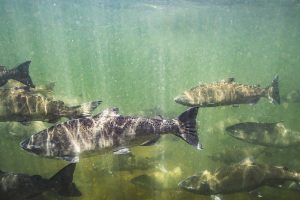By David Guy
With the water year so far having both the wettest and driest months we have seen in recent time, water resources managers in the Sacramento Valley are working hard in the face of this uncertainty to prepare for this year. The Sacramento Valley depends upon an orderly water rights priority system in California to serve multiple benefits in the region and we appreciate the State Water Board’s efforts to implement this system through emergency regulations it adopted on August 20, 2021. Importantly, these regulations are already in place for 2022 and the State Water Board updates the curtailment notices every week based on current hydrology and the unavailability of natural flows throughout the Bay-Delta watershed, including the Sacramento Valley.
The water rights system is an important foundation for our state and the implementation of the water rights system is essential to economic, social and environmental stability and sustainability throughout California. The current system for water rights has worked during the past several dry periods–not perfect–but amazingly well. Yes, there have been significant reductions in water supplies throughout both rural and urban areas in California, as cities and rural communities, farms, refuges and managed wetlands, fisheries, hydropower and recreation have all suffered without water. This, however, is how the system is intended to work and it is particularly important for managing precious water supplies during drought periods because it provides a known and well-established legal framework, administers water resources in an orderly manner, and it calls on water managers to creatively use and stretch available supplies for all beneficial purposes.




Several recent blogs have highlighted the creative management in the Sacramento Valley working within the water rights system. Roseville Replenishes Groundwater Basin with 106 Million Gallons of Water highlights how the City of Roseville, in addition to conserving water, has both recharged and extracted groundwater resources at strategic times to stretch its available supplies. With respect to fish and wildlife, water throughout the Sacramento Valley has been re-managed in very creative ways over the past several dry periods for the benefit of salmon and birds using the Pacific Flyway as shown in Managing for Fish and Wildlife During a Dry Year in the Sacramento Valley – What Did We Learn in 2021?
To be sure, we have seen plenty of pain and hardship as a result of dry years and the lack of available surface supplies. To help minimize this pain and provide for an orderly system that makes the water rights system work for California, we will continue to help organize and work with the various water suppliers in the Sacramento Valley as part of our effort to coordinate with state and federal agencies to help facilitate an orderly process to serve multiple benefits during dry years in the region. We will also continue to collaborate with the fish and wildlife agencies and conservation organizations to improve conditions for fish and wildlife.
Water right holders in Northern California and throughout California invest in the State Water Board’s Water Rights Fund to ensure the State Water Board has capacity and can modernize the effective administration of the water rights priority system, particularly in dry years when surface supplies are limited. The recent state budget has also augmented this funding to help with the dry years. Additionally, to help administer the water rights process, we have previously provided practical recommendations on how the State Water Board can continue to improve its process and help modernize and make the water rights priority system work better. See The Importance of Implementing the Water Rights Priority System in a Dry Year.
We would welcome your thoughts and other ideas at info@norcalwater.org.



